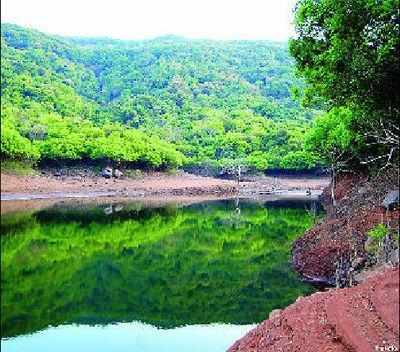- News
- Eco-tourism at Sahyadri Tiger Reserve gets a boost
This story is from July 27, 2015
Eco-tourism at Sahyadri Tiger Reserve gets a boost
In a bid to promote eco-tourism in the buffer zone of the Sahyadri Tiger Reserve, an expedition has been organised between August 14 and 16.

In a bid to promote eco-tourism in the buffer zone of the Sahyadri Tiger Reserve, an expedition has been organised between August 14 and 16.
PUNE: In a bid to promote eco-tourism in the buffer zone of the Sahyadri Tiger Reserve, an expedition has been organised between August 14 and 16. The trip will take participants to the Javli and Kandati basins in Satara district.
Jointly organised by the Sahyadri Tiger Reserve Foundation, forest department and Pune-based group Basalt Campers, the expedition will include 50 people from the city.The participants will be put up at homestay facilities at five villages near Bamnoli.
“There are 72 villages in the buffer zone of the tiger reserve. We are keen to help them by providing more livelihood opportunities that would reduce their dependency on the forest. Eco-tourism is a possible avenue open to them,” said divisional forest officer (DFO), Milind Panditrao.
Panditrao added that the forest department hopes to develop six clusters of villages that show a potential for eco-tourism. The Javli and Kandati basin is one such area.
“With the help of the forest department, rooms are being refurbished. We will provide hospitality and skill training to locals so that the interaction with the visitors is professional and smooth,” Surhud added.
“There are many popular getaways for people in Pune but they are becoming very crowded. This is a chance to visit an area virtually untouched by urban forces. Guests will live much like the locals do and eat what they eat,” said Rahul Datye of Basalt Campers.
Local sightseeing will include visits to the Kaas plateau, Mahimangarh fort, Shrishailya temple and waterfalls; boating in the Koyna backwaters apart from nature trails. Visitors will also trek to certain spots from where the wildlife at the reserve can be seen.
“There are gorgeous sights, but the area is virtually unknown. We hope that expeditions like this one will put the area on the map. When the word gets around, other tourists will follow,” Rahul said.
The growth of tourism is usually followed by concerns about the degradation of the natural landscape. Panditrao said that the forest department would work towards controlling the number of tourists visiting the area. “If the initial trip is successful, we hope to organise similar expeditions on a monthly or bimonthly basis. But we will ensure that the number of tourists is manageable,” he said.
Jointly organised by the Sahyadri Tiger Reserve Foundation, forest department and Pune-based group Basalt Campers, the expedition will include 50 people from the city.The participants will be put up at homestay facilities at five villages near Bamnoli.
“There are 72 villages in the buffer zone of the tiger reserve. We are keen to help them by providing more livelihood opportunities that would reduce their dependency on the forest. Eco-tourism is a possible avenue open to them,” said divisional forest officer (DFO), Milind Panditrao.
Panditrao added that the forest department hopes to develop six clusters of villages that show a potential for eco-tourism. The Javli and Kandati basin is one such area.
“Life is very difficult for the residents of the area. Although it is merely three hours away from Pune, accessibility in these villages is difficult. Villagers have to walk 20 km before they reach a bus stop to board a state transport bus,” he said. For this expedition, five villages – Mhalunge, Araw, Morni, Shindi and Chakdev – have been identified. Each of them has about ten houses. The villagers depend on forest resources for their livelihood, explained Surhud Datye of Basalt Campers.
“With the help of the forest department, rooms are being refurbished. We will provide hospitality and skill training to locals so that the interaction with the visitors is professional and smooth,” Surhud added.
“There are many popular getaways for people in Pune but they are becoming very crowded. This is a chance to visit an area virtually untouched by urban forces. Guests will live much like the locals do and eat what they eat,” said Rahul Datye of Basalt Campers.
Local sightseeing will include visits to the Kaas plateau, Mahimangarh fort, Shrishailya temple and waterfalls; boating in the Koyna backwaters apart from nature trails. Visitors will also trek to certain spots from where the wildlife at the reserve can be seen.
“There are gorgeous sights, but the area is virtually unknown. We hope that expeditions like this one will put the area on the map. When the word gets around, other tourists will follow,” Rahul said.
The growth of tourism is usually followed by concerns about the degradation of the natural landscape. Panditrao said that the forest department would work towards controlling the number of tourists visiting the area. “If the initial trip is successful, we hope to organise similar expeditions on a monthly or bimonthly basis. But we will ensure that the number of tourists is manageable,” he said.
End of Article
FOLLOW US ON SOCIAL MEDIA
